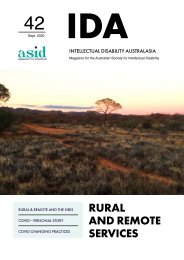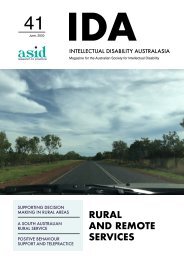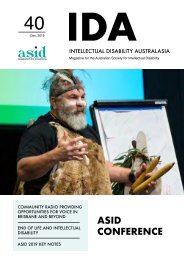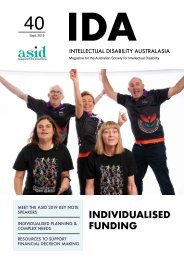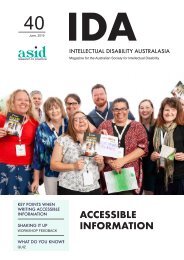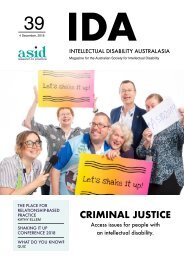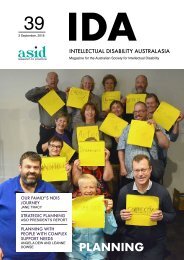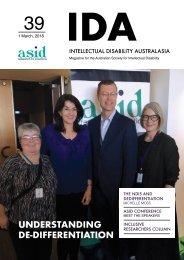You also want an ePaper? Increase the reach of your titles
YUMPU automatically turns print PDFs into web optimized ePapers that Google loves.
PROMOTING PERSONAL SAFETY AND PREVENTING ABUSE FOR YOUNG PEOPLE WITH DISABILITY<br />
Implications of this knowledge<br />
The four elements in the safety model underline the complex interplay between young people being<br />
protected by having their safety needs met and being active agents participating in determining what<br />
they want and need to feel and be safe.<br />
Young people’s experiences and views about safety intersect with important gaps in policy and practice<br />
frameworks in youth, disability and violence settings. Their priorities offer a new way of approaching<br />
longstanding problems in safety and harm.<br />
This new knowledge reveals an emphasis on the importance that young people placed on relationships,<br />
particularly in having people who they trust as stable parts of personal networks. It also highlights<br />
tensions and constraints in the way that these relationships are known and expressed – such as the<br />
ways in which movement of key people in and out of young people’s networks is often out of their<br />
control.<br />
For too long, discussion about safety for young people with disability has focused rather too much on<br />
abuse, and rather too little on what it takes to be a safe and confident person in the world. Finding ways<br />
to make safety a part of conversations with young people, families, workers and managers is a priority.<br />
For this to happen in ways that are not restrictive of young people’s rights to participation and inclusion,<br />
their priorities and preferences need to be promoted – notwithstanding the support that many people<br />
need from day to day. A natural jumping off point for considering personal safety are open dialogues<br />
which are part of the opening up of the world that happens (or should happen!) in young adulthood.<br />
Taking Action<br />
To read the Safety Project report in full, summary and plain English versions, follow this link:<br />
www.rcypd.edu.au/safety.<br />
References<br />
Jones, L., Bellis, M., Wood, S., Hughes, K., McCoy, E., Eckley, L., Bates, G., Mikton, C., Shakespeare, T.<br />
& Officer, A. (2012). Prevalence and risk of violence against children with disabilities: A<br />
systematic review and meta-analysis of observational studies. Lancet, 380, 899-907.<br />
Llewellyn, G., Wayland, S. & Hindmarsh, G. (2016). Disability and Child Sexual Abuse in Institutional<br />
Contexts. Sydney, Australia: Royal Commission into Institutional Responses to Child Sexual<br />
Abuse.<br />
Royal Commission into Institutional Responses to Child Sexual Abuse. (2017a) Final Report: Preface<br />
and Executive Summary. Commonwealth of Australia.<br />
Royal Commission into Institutional Responses to Child Sexual Abuse. (2017b) A brief guide to the Final<br />
Report: Disability. Commonwealth<br />
18 www.asid.asn.au





